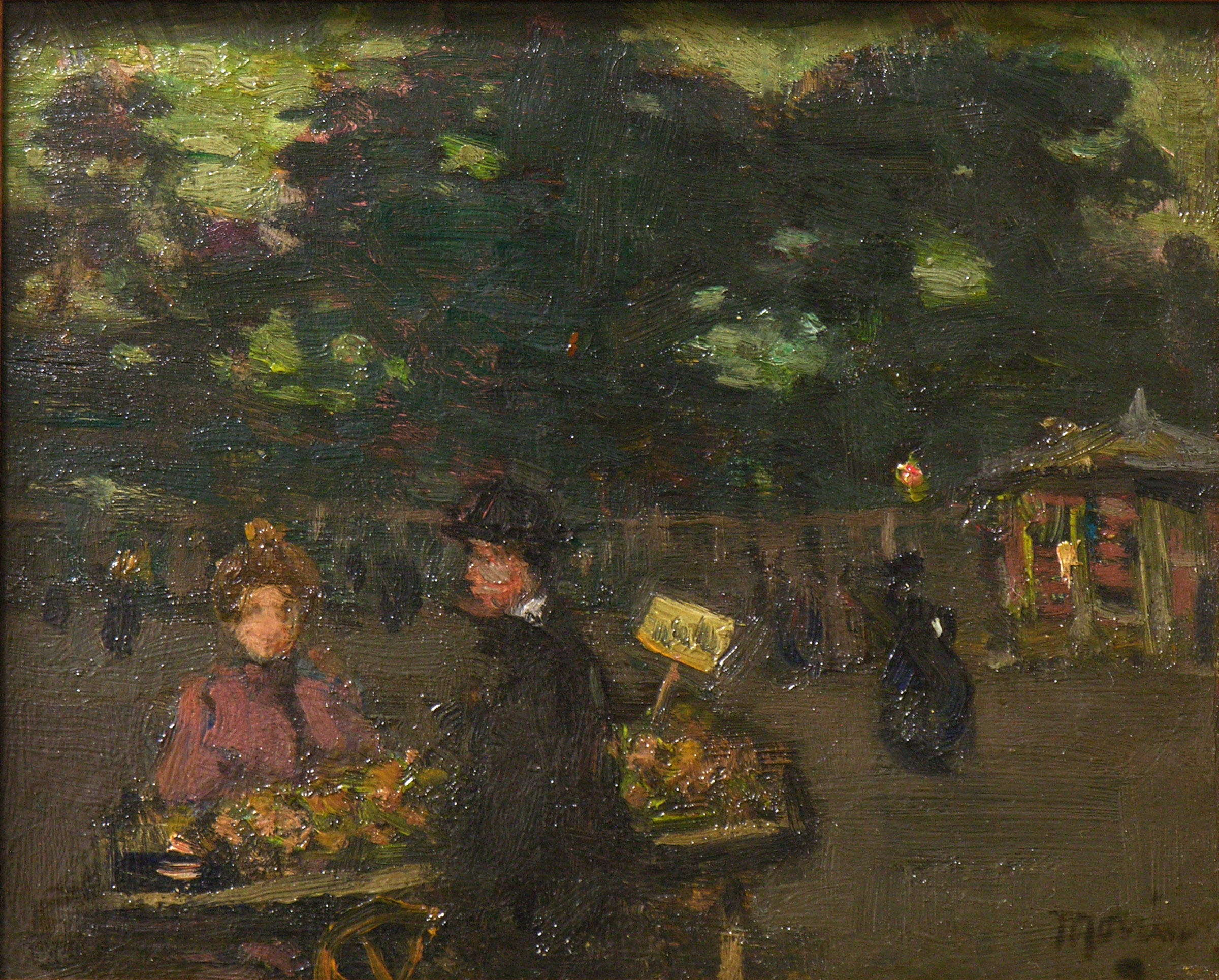Exceptional J.W. Morrice Panel a Display of Artist's Modern Vision

J.W. Morrice, The Flower Seller, Paris , 1905 (circa), oil on panel.
This sketch by James Wilson Morrice, a real jewel, however is not directly related to any known drawing or canvas. Although hard to date exactly, it is very typical of the kind of "Etudes" that he showed in Paris after 1905. Since it is signed there is a strong likelihood that he did exhibit this fine composition. Because he was a bit shy, drank a lot and did not leave any personal papers, James Wilson Morrice was often described as being 'mysterious', from which some authors have deducted that he was a sad character... Quite the opposite!
One friend recalls fondly his “joy of wandering about Paris" with Morrice, "and of being made to feel beauty in the strangest places..." (1) Another wrote “Everything comic amused Morrice and he could find comedy where a great many people could not.” (2) Another member of that group, future novelist Arnold Bennett, kept a diary in which we learn much about his Canadian friend; for example: “Morrice dined with me and stayed till 1 a.m. He has the joy of life in a high degree, and he likes living alone. "I enjoy everything," he said. "I got up this morning, and I saw an old woman walking along, and she was the finest old woman I ever did see. She was a magnificent old woman, and I was obliged to make a sketch of her. Then there was the marchand de quatre-saisons. His cry is so beautiful. I began to enjoy myself immediately I got out of bed. It is a privilege to be alive." And so on." (3) The memory was so vivid that he paraphrased it in his novel Buried Alive, where his hero Priam Farll opens the window to see “a sturdy old woman... coming down the street with a great basket of assorted flowers... she was vigorously alive, a part of the magnificent earth. All life gave him joy; all life was beautiful to him." (4)
Except for her age, our Flower Seller illustrates perfectly both passages. Here she is, the lively marchande who installed her cart every morning in an open space, hoping to attract passers-by with the fruits and flowers of the season. Attracted by her smile, a man hurrying home after his day at the office (the sun is setting) has stopped to buy a small bouquet. Other silhouettes crisscross the space behind them, and a woman has just bought a newspaper at a kiosk; the back of the stage is closed-off by big trees enclosed by a curved iron fence, probably denoting a park. Remarkably, this whole story, including the price on the label (tiny scratches with the tip of the brush), the man’s blushing cheeks, his stiff collar (besides the newspaper, the only touch of pure white), the woman's black blouse under her aubergine suit, is all told within a surface slightly bigger than the hand... 12 x 15 cms, a format that Morrice favored for many years because it allowed him to work from a café table. But this one was probably sketched from a public bench, if we identify the location with Place Valhubert, a semi-circular space which separates the Jardin des Plantes from the Seine, upstream on the same rive gauche where Morrice lived on the Quai des Grands-Augustins; there was a similar kiosk there.
Journalist Muriel Ciolkowska, who interviewed the artist in 1913, wrote this touching vision of Morrice walking along the Seine, "never seen to carry visible painting kit, his complete outfit consisting of a small box which could fit like a cigar case into one of the pockets of his dapper tweed suit, and which held his panels, his brushes and a made-out palette." Once comfortably installed, "He would look at his subject, mix his tone, look again, then dab on a tiny morsel of color, lay down his little brush, take a puff of smoke, and so on beteween every minute touch" (5).
Copyright © Lucie Dorais and Galerie Walter Klinkhoff, 2011
Sources:
1. Clive Bell, Old Friends, 1956, p. 66
2. Gerald F. Kelly quoted by D.W. Buchanan in James Wilson Morrice, A Biography, 1936, p. 52.
3. May 16, 1905. Flower, N., ed.: Journal of Arnold Bennett, 1932, v. 1 p 216.
4. Arnold Bennett, Buried Alive, 1908, ch. VI, first paragraph.
5. Muriel Ciolkowska, "Memories of Morrice", Canadian Forum, Nov. 1925. p 52-53.




